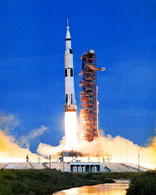
Why is this teacher having all the fun?

![]()
Source: Rocket cart, Rick Matthews, Wake Forest University
In this lesson, you will look at the Interactive popup. Assistance may be required.
Law of Conservation of Momentum
In a closed isolated system, total mechanical energy is conserved
System: Group of related objects
Closed: No mass enters or leaves the system
Isolated: No unbalanced outside forces—no work done on the system
Conserved: Stays the same
Momentum: A measure that quantifies (puts a number to) motion → p = mv
p1i + p2i = p1f + p2f
m1v1i + m2v2i = m1v1f + m2v2f
In the equation, there are 2 objects m1 and m2 that are the masses of each and v1 and v2 are the velocities of each, also the subscript i means initial and the subscript f means final.

The most common conservation of momentum problems are collisions and explosions. These are situations where momentum is transferred from one object to another, but the total for the system stays the same.
For example, a rocket works by the principle of conservation of momentum. A rocket sitting on the launch pad has zero momentum. When the rocket engines ignite, hot gasses come shooting out one end of the rocket at an incredibly high velocity. This gas has momentum down. In order for momentum to be conserved, the rest of the system (the rocket) has to gain an equal momentum up.

Source: Apollo Rocket Launch, NASA, Wikimedia Commons
![]() Watch the two videos below. Each video provides information about the law of conservation of momentum in different ways.
Watch the two videos below. Each video provides information about the law of conservation of momentum in different ways.
Source: Conservation of Momentum, science7994, YouTube
Source: Richard Garriott Space Video Blog: Conservation of Momentum, ccsse, YouTube
In your notes, answer the following questions using the information from the videos:
Interactive popup. Assistance may be required.
If an object is propelled by another object, the first object will transfer its momentum to the second object.
Interactive popup. Assistance may be required.
Mi (Mass initial) × Vi (Velocity initial) = Mf (Mass final) × Vf (Velocity final)
Interactive popup. Assistance may be required.
A few possible examples are a ball hitting another ball on a pool table, Newton’s cradle, and a baseball bat hitting a baseball.
Interactive popup. Assistance may be required.
The small object transfers it’s momentum to the object with the large mass, but the object with the large mass moves slowly.